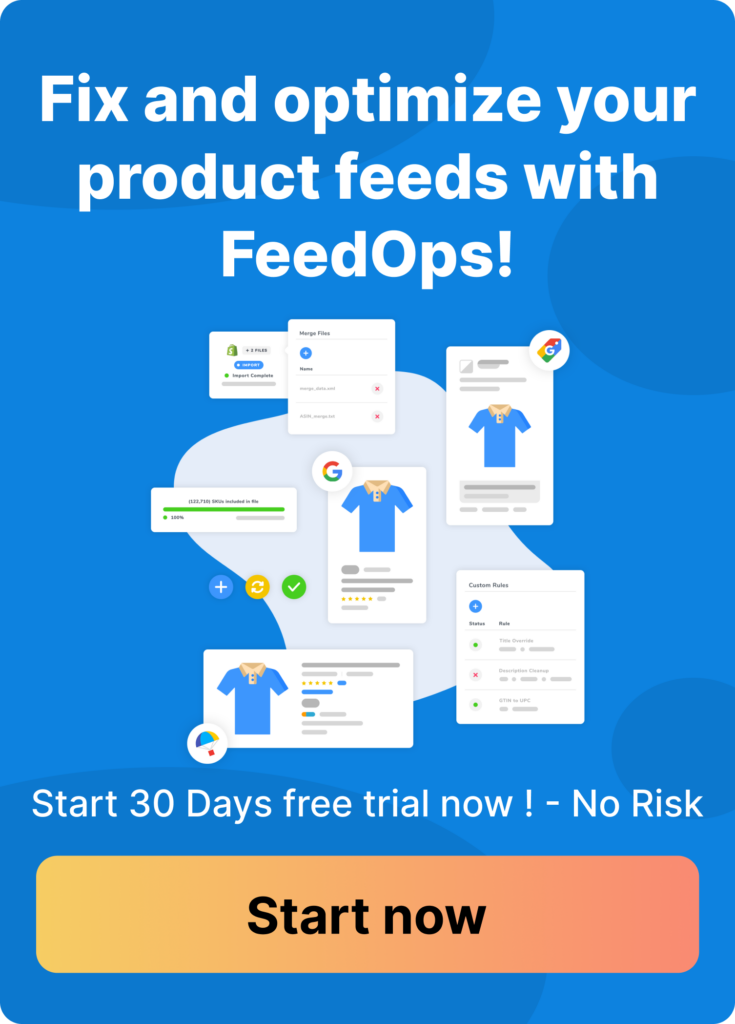Performance Max (PMax) campaigns have revolutionized digital advertising, offering unparalleled reach across Google’s vast array of channels. However, harnessing the full potential of PMax requires a deep understanding of its components and strategic campaign structuring. In this comprehensive guide, we’ll dissect the anatomy of a profitable PMax campaign, from the fundamentals of setting up your campaign to advanced strategies for maximizing return on ad spend (ROAS).
The Enablers of PMax Campaigns
Structuring Your PMax Campaign
- Product Data Feed: At the heart of any PMax campaign is the product data feed. This vital component drives Google Shopping Ads and plays a crucial role in the accuracy of product information. The better your data feed, the more visible your products become, directly influencing sales. To leverage this, link your Merchant Center with PMax.
- Page Feed: Separate from the product data feed, the page feed fuels Dynamic Search Ads (DSAs). It provides Google with the necessary content to generate relevant ad headlines and landing pages. If you don’t provide a page feed, Google can generate one automatically, but having a tailored feed can significantly improve ad relevance.
- Conversion Tags: Conversion tags are pivotal for tracking website conversions. They provide the data needed for optimization and reporting within PMax. Accurate tracking ensures that you can measure the effectiveness of your campaigns and make data-driven decisions.
- Dynamic Remarketing Tags: These tags are crucial for displaying personalized ads to users who have previously visited your website. By targeting these users, you significantly increase the likelihood of conversions, as these ads tend to be more relevant and engaging.
- Asset Groups: Asset groups in PMax are where you organize your ad assets, including images, videos, headlines, and descriptions. PMax uses these assets to create responsive search ads, display ads, and video ads. The way you structure these groups can have a substantial impact on the effectiveness of your campaign.
- Listing Groups: Listing groups are used to organize your products more effectively. You can structure them by item, brand, category, custom label, or product type. This organization is crucial for managing large product catalogs and targeting specific segments of your audience.
- Products: Products are the core element of your PMax campaign. How you organize and present your products within PMax can significantly impact your campaign’s performance.
- Audience Signal: Audience signals use data from your website visitors and Google’s vast data pool to gauge user intent and interests. It’s important to note that this isn’t a specific audience target but a signal that helps Google understand who might be interested in your products. As users interact with your ads, Google refines and optimizes the audience targeting for better results.
Key Levers for Maximizing ROAS
- Budget Allocation: Your budget is a crucial lever in PMax campaigns. Allocating an appropriate budget ensures sufficient reach and exposure for your target audience. An underfunded campaign can miss out on potential conversions, while an overfunded one might lead to diminishing returns.
- Setting a ROAS Target: Defining a ROAS target gives your campaign a clear goal and helps guide your optimization strategies. This target should be realistic yet ambitious, balancing the desire for high returns with the practicalities of your market and competition.
- Product Feed Optimization: A well-optimized product feed is a key to success in PMax campaigns. This involves ensuring your product information is accurate, up-to-date, and presented with high-quality images and compelling descriptions. The more attractive and relevant your product listings, the higher the chances of conversion.
Refining Ad Spend Strategy in PMax for Profit Focus
In PMax campaigns, the distribution of your ad spend is significantly influenced by your ROAS target and the structure of your asset groups. A higher ROAS target is a strategic decision that guides Google’s algorithms to allocate more budget towards channels and activities with a direct impact on sales, particularly Google Shopping. This approach is crucial for businesses prioritizing immediate profitability over long-term brand building.
Key Strategies for Profit-Focused Ad Spend
- Set a High ROAS Target: By setting a higher ROAS target, you effectively instruct Google to prioritize ad spend on campaigns that are more likely to result in immediate sales. This means a greater focus on lower-funnel activities, such as Google Shopping, where customers are closer to making a purchase decision.
- Limit Upper-Funnel Activities: While upper-funnel campaigns like brand awareness are important, they often don’t yield immediate returns. By focusing less on creating numerous asset groups for these activities, you can allocate more of your budget to direct sales-driving campaigns.
- Regularly Analyze Performance Data: Continuously monitor your campaign performance. Look for insights into which aspects of your campaigns are driving sales and adjust your strategy accordingly. If you find that certain asset groups or activities are not contributing to your high ROAS goal, consider reallocating those resources.
By implementing these strategies, you can more effectively direct your PMax campaign’s ad spend towards activities that support immediate profitability. This approach helps maintain a strong focus on ROAS, ensuring that your investment is geared towards tangible results and sustained business growth.



